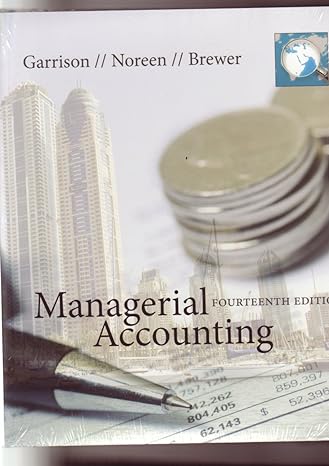Applying Overhead; Journal Entries; T-Accounts [LO1, LO2, LO3, LO4, LO5] Custom Metal Works produces castings and other
Question:
Applying Overhead; Journal Entries; T-Accounts [LO1, LO2, LO3, LO4, LO5]
Custom Metal Works produces castings and other metal parts to customer specifications. The company uses a job-order costing system and applies overhead costs to jobs on the basis of machinehours.
At the beginning of the year, the company used a cost formula to estimate that it would incur
$4,320,000 in manufacturing overhead cost at an activity level of 576,000 machine-hours.
The company had no work in process at the beginning of the year. The company spent the entire month of January working on one large order—Job 382, which was an order for 8,000 machined parts. Cost data for January follow:
a. Raw materials purchased on account, $315,000.
b. Raw materials requisitioned for production, $270,000 (80% direct and 20% indirect).
c. Labor cost incurred in the factory, $190,000, of which $80,000 was direct labor and $110,000 was indirect labor.
d. Depreciation recorded on factory equipment, $63,000.
e. Other manufacturing overhead costs incurred, $85,000 (credit Accounts Payable).
f. Manufacturing overhead cost was applied to production on the basis of 40,000 machine-hours actually worked during January.
g. The completed job was moved into the finished goods warehouse on January 31 to await delivery to the customer. (In computing the dollar amount for this entry, remember that the cost of a completed job consists of direct materials, direct labor, and applied o verhead.)
Required:
1. Prepare journal entries to record items
(a) through
(f) above. Ignore item (g) for the moment.
2. Prepare T-accounts for Manufacturing Overhead and Work in Process. Post the relevant items from your journal entries to these T-accounts.
3. Prepare a journal entry for item (g) above.
4. Compute the unit product cost that will appear on the job cost sheet for Job 382.
Step by Step Answer:






